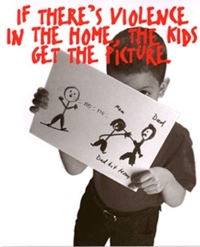
Despite the decreasing levels of juvenile arrests for violent crimes (i.e., murder, forcible rape, robbery, and aggravated assault), juveniles still accounted for 17 percent of all violent crime arrests in 1998 (Bureau of Justice Statistics, 1999:351). Although accurate data are not available on the percentage of these youthful offenders who were victims of child abuse and neglect or were exposed to domestic violence in their own homes, the percentage is probably very high. In surveys of Federal, State, and local prison inmates conducted by the Bureau of Justice Statistics, both male and female respondents were twice as likely as members of the general population to report childhood physical or sexual abuse (Harlow, 1999:1). In 1997, the Child Welfare League of America released a report on a community study done in Sacramento County, CA, which found that 9- to 12-year-old children known to the child welfare system were 67 times more likely to be arrested than their age cohorts in the general population (Child Welfare League of America, 1997). In addition, several notable reports by researchers, interventionists, and judges agree that the majority of children who witness violence in their homes demonstrate a wide range of problems, including aggression, emotional instability, and violence (Langer, 1997; Osofsky, 1997).
Some studies have tried to clarify the connection between victimization and delinquency. Notably, in 1997, the Honorable Lester Langer, Associate Administrative Judge of the 11th Judicial Circuit, received a grant from the U.S. Department of Justice's Violence Against Women Grants Office (VAWGO, now VAWO) to document the number of cases related to domestic violence that were filed in the Miami-Dade County Juvenile Court in a 5-month period. This study (Langer, 1997) found that a significant proportion of these cases involved domestic violence perpetrated by a juvenile against parents or siblings. The data suggest that the percentage has increased and is likely to continue to increase. Reasons for the increase in reported cases may include better training that enables police to identify domestic violence, a broader definition of domestic violence that includes family members other than parents, and greater awareness of what is unacceptable behavior within a family. In this limited data set, the primary victim of juvenile violence in the family is the mother.
Data from calls to a 24-hour hotline for the Violence Intervention Program (VIP) in New Orleans, LA, support the findings from Miami-Dade. Of the 300 calls received in 1999, more than half were from parents concerned about violent behavior by their 13- to 17-year-old children (Osofsky, 2000). Courts nationwide have developed innovations to address child maltreatment and the problem of abuse perpetrated by children that results in calls to police by a parent.
 Print
Print Email
Email







